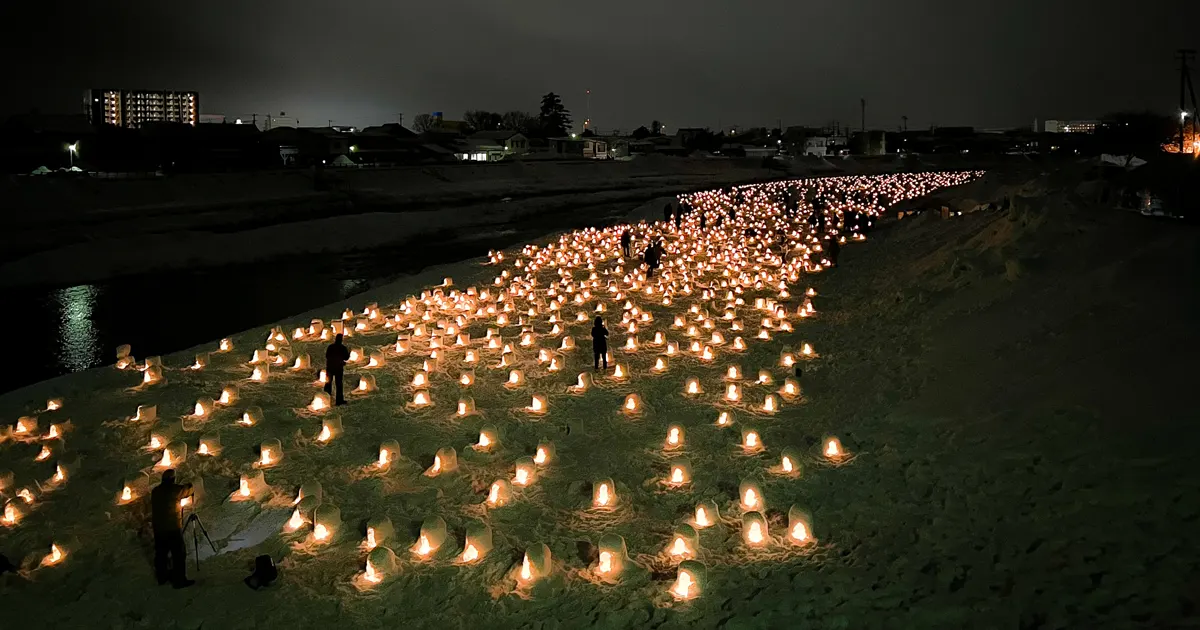A faint glow on a silent snowy field —that’s the essence of Yokote Kamakura Festival , held every February in Yokote City, Akita Prefecture. Inside the snow huts known as kamakura , local children welcome visitors with warm amazake and rice cakes. This winter-only event blends tradition and dreamlike scenery, creating a truly unique destination.
This article focuses on Q&A related to the Yokote Kamakura Festival, covering key information and answering common questions before your visit. Whether it’s your first time in Japan or you’re traveling solo, this guide is designed to be clear, kind, and reassuring.
Cold weather and snowy roads can seem daunting, but knowing what to expect will ease those worries. Let this Yokote Kamakura Festival guide help make your winter trip more comfortable—and more memorable.
Contents
Yokote Kamakura Festival Access Guide
Check the latest weather forecast before your visit: [weathernews ]
By Train
Tokyo Station
Take the Akita Shinkansen “Komachi” to Omagari Station (approx. 3 hr)
Transfer to the Ōu Main Line to Yokote Station (approx. 20 min)
From Yokote Station, walk about 10 minutes to the main venue (Yokote City Hall area)
Total travel time: approx. 3 hr 40 min
Akita Station
Take the Ōu Main Line to Yokote Station (approx. 1 hr)
From Yokote Station, walk about 10 minutes to the main venue (Yokote City Hall area)
Total travel time: approx. 1 hr 10 min
Sendai Station
Take the Tōhoku Shinkansen to Kitakami Station (approx. 40 min)
Transfer to the Kitakami Line to Yokote Station (approx. 1 hr 40 min)
From Yokote Station, walk about 10 minutes to the main venue (Yokote City Hall area)
Total travel time: approx. 2 hr 40 min
One Point Advice
Visitor Info: Hours, Admission, Access
Dates: February 15 and 16 every year
Time: The main Yokote Kamakura Festival events run from around 6:00 PM to 9:00 PM
Admission: Free
Closed: Open regardless of rain; partial restrictions possible in severe weather
Official Travel Guide: https://www.yokotekamakura.com/
Yokote Kamakura Highlights & Itinerary
Kamakura Street|Nighttime Snow Domes
Along the street in front of Yokote City Hall , large kamakura over 2 meters tall line the way. Inside, local children offer amazake and rice cakes, creating an intimate and heartwarming cultural experience . As dusk falls, the soft glow of candlelight fills the snow huts and surrounding streets. It’s a quiet warmth of the Yokote Kamakura experience that photos alone can’t capture.
Time required: 30–40 minutes
Admission: Free (amazake also free)
Janosaki Riverside|Mini Kamakura by the River
At the Janosaki Riverside along the Yokote River, hundreds of mini kamakura are carefully arranged, each lit with its own candle. On clear nights, the snow and water reflect the soft lights, creating a dreamlike scene. The best time to visit is between 6:00 PM and 8:30 PM. Dress warmly and take your time strolling through the Yokote Kamakura Festival and taking photos.
Time required: 20–30 minutes
Admission: Free
Fureai Square|Food Stalls & Local Fun
Just a short walk from the station, Yokote Fureai Square is a hub of festival energy. Food stalls offer local delights like Yokote yakisoba and sake tastings , while traditional games invite visitors to join the fun. Some signs and guides at the Yokote Kamakura Festival are available in English, helping international guests enjoy the experience comfortably.
Time required: 30–45 minutes
Admission: Free (food and drinks at your own expense)
Nearby Spots After the Festival
Kamakura Hall|Indoor Snow Hut Experience
About a 10-minute walk from Yokote Station , Kamakura Hall features a refrigerated room where you can enter a real snow hut . Exhibits explain the history and cultural roots of the festival, making it ideal for those visiting outside of festival days. Don’t forget to browse the Kamakura Hall gift shop for local Yokote souvenirs.
Michi-no-Eki Sannai|Food & Scenic Rest Stop
Accessible in about 40 minutes by Ōu Main Line and bus, Michi-no-Eki Sannai is a roadside station filled with local specialties and seasonal products. Surrounded by snowy landscapes, it’s the perfect place for a relaxing break. Popular souvenirs from Akita include iburigakko (smoked pickles), miso-pickled vegetables, and locally brewed sake—favorites among international travelers.
Masuda Uchigura|Historic Snow Country Homes
About 30 minutes by train from Yokote, the Masuda District preserves traditional merchant homes with thick, snow-protective storehouses called uchigura
Yokote Kamakura Q&A
What kind of experience does the festival offer?
You can enter snow huts (kamakura) and enjoy amazake and rice cakes served by local children—a rare and welcoming cultural experience.
Can I enjoy the festival alone?
Absolutely. It’s perfect for solo travelers, with plenty to explore, photograph, and eat at your own pace.
What should I wear for the event?
Dress warmly for the Yokote Kamakura Festival in a heavy coat, boots with grip, gloves, and a hat. Cold weather gear is essential.
How long should I plan to stay at the festival?
Most visitors spend about 1.5 to 2 hours walking around and taking photos.
Are there restrooms or places to warm up?
Yes, temporary restrooms and heated rest areas are available at the venue.
Yokote Kamakura Summary & What’s Next
The Yokote Kamakura Festival offers quiet warmth and heartfelt hospitality—a true winter gem rooted in Akita’s snow culture. From candlelit huts to friendly local encounters, the experience lingers in memory.
Access is easy, and thoughtful arrangements make night visits comfortable for all. With the right clothing and mindset, anyone can enjoy this enchanting winter experience.
Next, why not visit the historic Uchigura homes in Masuda or the soothing hot springs of Yuzawa?

